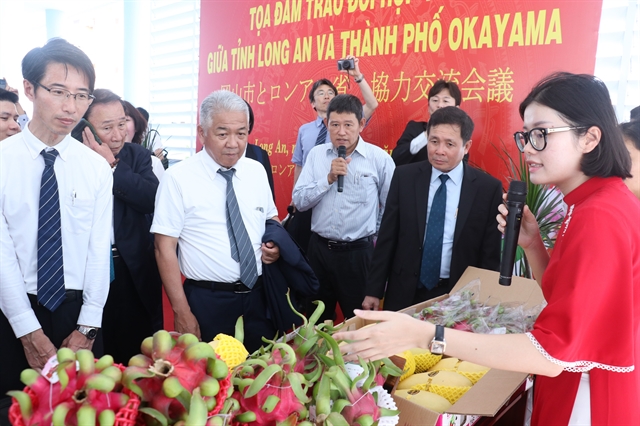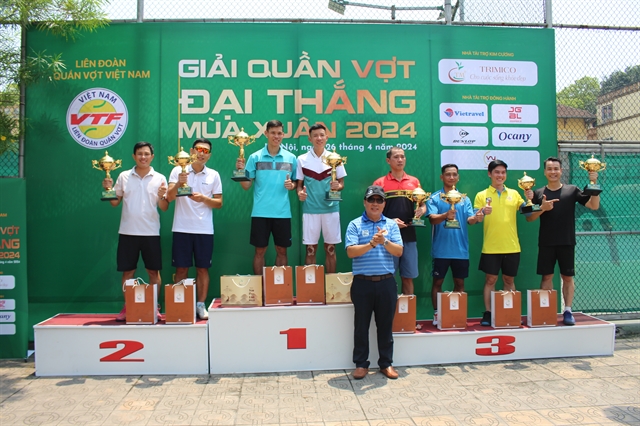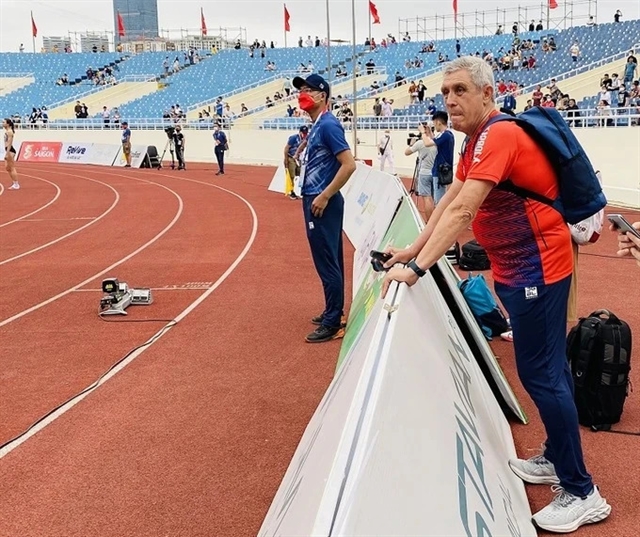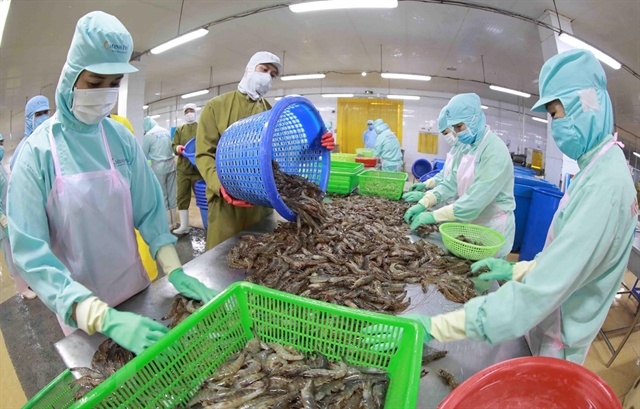

Old people can be seen building bridges in the Mekong Delta province of Đồng Tháp. They are veterans who want younger people to live more comfortable lives.
 |
| Lê Văn Út, 67 years old (first, left) is in charge of construction technique. Team members learned construction technique from a local in Lấp Vò District and their friends. |
Old people can be seen building bridges in the Mekong Delta province of Đồng Tháp.
They are veterans who want younger people to live more comfortable lives.
Many old bridges made from bamboo and wood have become weak.
The elderly folks are making new, stronger bridges from cement.
By Nguyễn Hành and Nguyễn Vân
It was a scorching hot day when I attended the launching of a bridge over the Cái Bàn River in the Mekong Delta province of Đồng Tháp.
But it was not the heat that warmed the cockles of my heart, and that of others present at the ceremony.
This bridge had been built by people in their late sixties, seventies and eighties, voluntarily, charging nothing for their labour.
Võ Văn Lộc, a 82 year old native of Tân Hòa Commune in Đồng Tháp, was a founder of the voluntary construction team in 2008.
Initially, it had less than ten members, but boasts more than a hundred now. Over the last years, the team has worked hard to build more than a hundred new bridges and upgrade several dozen kilometres of roads to help local people.
“My hometown is poor and quite far from the province’s centre. Seeing locals, especially children, having to use the cầu khỉ (foot bridges) which are unstable and unsafe, my neighbours and I (all senior citizens) decided to form a team to construct bridges in the locality in order to make local’s lives easier,” said Lộc.
Over nearly ten years, the team has built more than 100 bridges 2 to 4.5 metres wide and 20 to 45m long, Lộc said.
At first the team would identify a dilapidated bridge and replace it with a new one under the approval of the authority.
However, after they built a dozen or so bridges this way, the team became well-known and local authorities began contacting them, said Lộc.
“When we [the construction team] get a new project, we will study the site, make a design for the bridge and give the authorities an estimate of expenditure. In recent years, local authorities have been giving us 25 per cent of total funding for a project. Together with the locality, we then call for donors to get the remaining funds. Finally the construction team starts the work, and we do it for free,” said Lộc.
In the first few years, because they lacked people as well as enough construction knowledge and experience, they only built wooden and cement bridges of less than 1.5 tonne weight limit.
“In 2010, we realised that we had to replace existing bamboo and wooden bridges with strong and durable cement bridges. If we continued to build bridges that were just 2 metres wide and had a 1.5 ton limit, they were no longer of practical use in a few years.
“So we came to find Hai Đâu in Lấp Vò District to learn to build bigger bridges with greater weight limits. Now we can build bridges of 5 tonne weight limit and meet construction standards set by the Đồng Tháp Bridge Association.”
Lê Văn Út, 67, is in charge of construction methods. He said, “We haven’t attended any official class for such things, we just learnt how to construct bridges from Hai Đâu and our friends."
“When we build bridges, we have to carefully study reinforced concrete construction and things like that. Other skills such as organising and allocating jobs are also important. We learned to assign different jobs to different people, based on their age and specialisation,” said Út.
“We are proud to say that we have constructed more than 100 concrete bridges since our team was established in 2008, and until now none of them has any problem and thanks God that we haven’t had any accident while working.”
The team now has 115 members who are mostly from four communes of Lai Vung District – Tân Hòa, Vĩnh Thới, Long Hậu, and Long Thắng. Among them, more than 50 per cent are 60 and above, the youngest are in their 50s.
“I have been with the team for four years. Frankly, this volunteer job is physically heavy for us seniors. Yet, as we share the job, we feel it is less tough. To see a road or a bridge get finished, and local people, especially children commute easily is such a rewarding experience. It motivates us to continue building new bridges and roads,” said 76 year old Nguyễn Hòa Ân, a resident of Long Hậu Commune.
The team has expanded its work outside Lai Vung District to neighbouring Lấp Vò and Châu Thành districts.
“Whether it is our district or others, all our work is voluntary. But, for those who live far from the construction site, the locality or contractors should give them some commuting stipend. While we work on a bridge or road, locals always offer us food,” said Lộc.
“What concerns me most now is insurance for the construction team. We are mostly seniors, and while some are reasonably well of, others lead a hard life. When we work on the construction projects, unexpected accident could happen. It would be hard without insurance for their family and the team itself.”
Bùi Văn Lợi, 74, said, “We joined the project with the aim to refresh and improve the face of our hometown. Our desire is to eliminate all foot bridges and muddy roads in the locality.”
“We also wish to have health insurance and accident insurance, just in case of unfortunate incidents,” said Lợi.
Lai Vung District’s People’s Committee Chairman, Hồ Thanh Phương, praised the team.
“The volunteer construction team, over the last few years, have constructed more than 90 cement bridges and kilometres of cement roads for Lai Vung District and other localities. This has improved the face of the rural district," he said.
“Their contribution is invaluable. That the locality has failed to support them with health and accident insurance is one of our biggest concerns. We have recently reviewed the conditions of the team members and called for funds to support them with insurance.” -- VNS
GLOSSARY
It was a scorching hot day when I attended the launching of a bridge over the Cái Bàn River in the Mekong Delta province of Đồng Tháp.
To launch a new bridge means to open it to start functioning as a bridge. This usually happens with a ceremony.
But it was not the heat that warmed the cockles of my heart, and that of others present at the ceremony.
“To warm the cockles of my heart” means to make the different body parts that make up the heart, or make the heart and the person happy.
This bridge had been built by people in their late sixties, seventies and eighties, voluntarily, charging nothing for their labour.
To do something voluntarily means to do it without expecting to be paid.
Võ Văn Lộc, a 82 year old native of Tân Hòa Commune in Đồng Tháp, was a founder of the voluntary construction team in 2008.
A founder of the construction team is one of the people who started it.
Initially, it had less than ten members, but boasts more than a hundred now.
Initially means at first.
Over the last years, the team has worked hard to build more than a hundred new bridges and upgrade several dozen kilometres of roads to help local people.
To upgrade roads means to do work on them to make them better.
“Seeing locals, especially children, having to use the cầu khỉ (foot bridges) which are unstable and unsafe, my neighbours and I (all senior citizens) decided to form a team to construct bridges in the locality in order to make local’s lives easier,” said Lộc.
If a bridge is unstable it could collapse.
At first the team would identify a dilapidated bridge and replace it with a new one under the approval of the authority.
To identify a dilapidated bridge means to see that it is in that condition.
Dilapidated means broken down.
“When we [the construction team] get a new project, we will study the site, make a design for the bridge and give the authorities an estimate of expenditure.”
A site is a place where something, like the construction of a bridge or a building, takes place
An estimate is a careful guess.
Expenditure means cost.
“Together with the locality, we then call for donors to get the remaining funds.”
Donors are people who give.
In the first few years, because they lacked people as well as enough construction knowledge and experience, they only built wooden and cement bridges of less than 1.5 tonne weight limit.
Lacked means “were without”.
“In 2010, we realised that we had to replace existing bamboo and wooden bridges with strong and durable cement bridges.”
Existing bamboo bridges are bridges that are there now.
Durable bridges are bridges that last and can cope better with weathering and other things that may cause bridges to break down.
“So we came to find Hai Đâu in Lấp Vò District to learn to build bigger bridges with greater weight limits.
A bridge’s weight limit is the greatest amount of weight it can cope with carrying. If anything heavier than the weight limit goes over the bridge, it could harm the bridge.
“When we build bridges, we have to carefully study reinforced concrete construction and things like that.”
Reinforced concrete means concrete that has things like wire put into it to make it stronger.
“Other skills like organising and allocating jobs are also important.”
To allocate jobs means to give different jobs to different people to do.
“Frankly, this volunteer job is physically heavy for us seniors.”
Frankly, means speaking the plain truth.
To see a road or a bridge get finished, and local people, especially children commute easily is such a rewarding experience.
To commute means to travel from home to work, or school, and back.
It motivates us to continue building new bridges and roads,” said 76 year old Nguyễn Hòa Ân, a resident of Long Hậu Commune.
If something motivates them to carry on building, it gives them reason to want to do it.
“But, for those who live far from the construction site, the locality or contractors should give them some commuting stipend.”
A stipend is a small payment given to someone to help them perform duties.
“Our desire is to eliminate all foot bridges and muddy roads in the locality.”
To eliminate all foot bridges and muddy roads means to get rid of them.
WORKSHEET
Find words that mean the following in the Word Search:
A word that describes elderly people.
The number of years in which the team has built more than 100 bridges 2 to 4.5 metres wide and 20 to 45m long.
The relationship between Lê Văn Út and people who taught him how to construct bridges.
The people who Nguyễn Hòa Ân enjoys seeing commute easily when a bridge is finished.
The age range of the youngest of the bridge builders.
o | s | o | n | b | i | m | d | s | u | i | c |
b | z | u | m | a | l | n | r | y | b | t | h |
n | l | t | k | l | s | i | l | a | e | r | i |
r | e | s | e | n | i | o | r | s | r | s | l |
f | r | i | e | n | d | s | i | c | e | i | d |
y | o | r | r | b | o | m | a | t | c | n | r |
i | n | i | t | t | z | u | m | y | k | i | e |
a | f | w | e | a | l | t | h | y | p | n | n |
u | d | r | s | p | e | c | i | n | s | g | s |
f | i | f | t | i | e | s | h | a | d | t | s |
ANSWERS: 1. Seniors; 2. Ten; 3. Friends; 4. Children; 5. Fifties.









